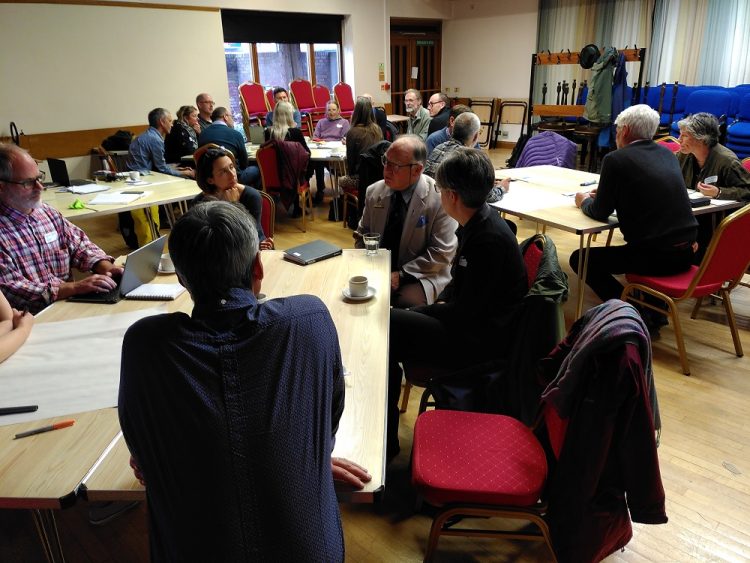Community Energy professionals from across the UK met on 12th October for the launch of Sharenergy’s innovative Community Heat Development Unit (CHDU).
Attendees shared knowledge of existing community heat projects, as well as insights into some of the barriers faced. Opening the conference, Sharenergy CEO Jon Hallé outlined the project context with a description of an existing heat network project, Woolhope Woodheat, and some of the lessons learned from that which might be used to inform future community energy projects.
Dave Green, Development Manager at Sharenergy, described the project aim as “the right tech in the right place with the right partners”, aiming to produce a business model that can be used by potential and existing community energy groups wanting to work on heat network projects, with case studies illustrating how the model can be used in particular locations. Sharenergy’s partners for the project are Community Energy England and the Marches Energy Agency.
Heat sources and storage for heat networks
Martin Crane from Carbon Alternatives presented potential opportunities for addressing smaller parts of a district heating network, utilising existing structures and systems. Attendees discussed different sources of heat, noting that the underlying geology of an area can be an advantage as well as a barrier to building heat networks, and the project’s potential for mapping areas suitable for community heat networks.
Heat storage was also discussed, noting that it can give energy security, with the main barriers being cost and space needed. The need for reliability of a heat network was also addressed, with Jon Hallé emphasising the importance of providing “heat which is affordable, which is low carbon, which is reliable for the whole period of the project”.
Fabric upgrades
Contractor and skills shortages and sources of finance were some of the barriers discussed, with the suggestion that improvements to buildings need to be seen as equitable across a scheme. It was felt, though, that community heat networks could drive retrofit schemes and help provide credibility for future energy efficiencies. Dave Green also emphasised the need to integrate thinking about fabric upgrades into planning heat networks, saying “one of the advantages of working with a heat network is you’re working on 100 properties at the same time…can we pull in some grant funding, and could we pull in an installer who’s interested?”.
Community engagement
Despite barriers to community heat projects such as lack of technical expertise, fear of risk and lack awareness of the benefits of community heat, it was agreed that strong local project leadership and meaningful community engagement are essential both to start projects and for their long-term continuance.
Jon Hallé emphasised the suggested that “people who understand that we’re in a time of crisis and [are] willing to work on it are rare in our society and they’re like gold dust…they need to know something where there’s a path for it to work”.
To stay updated on the progress of the project, join the Community Heat Development Unit mailing list.
